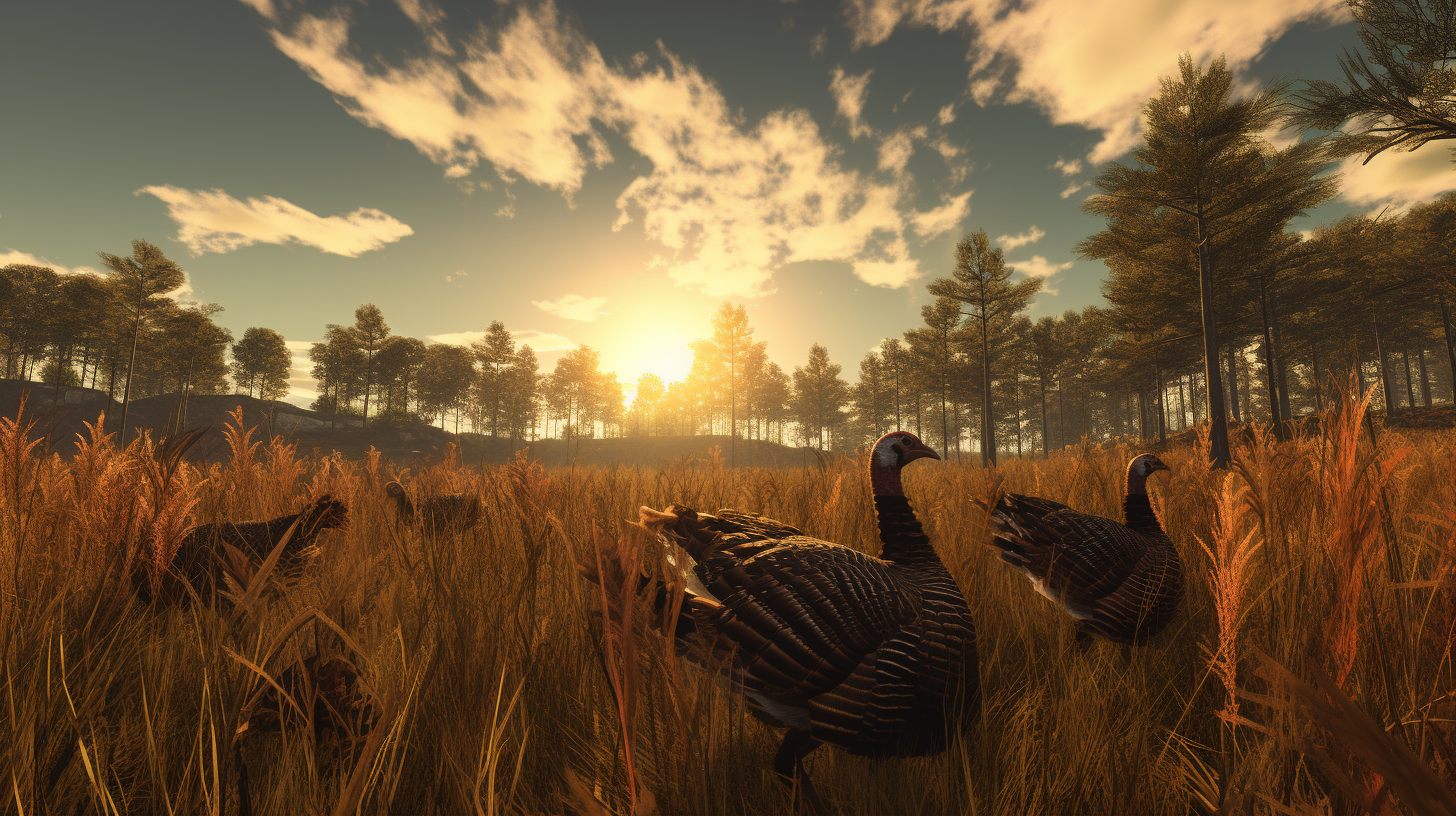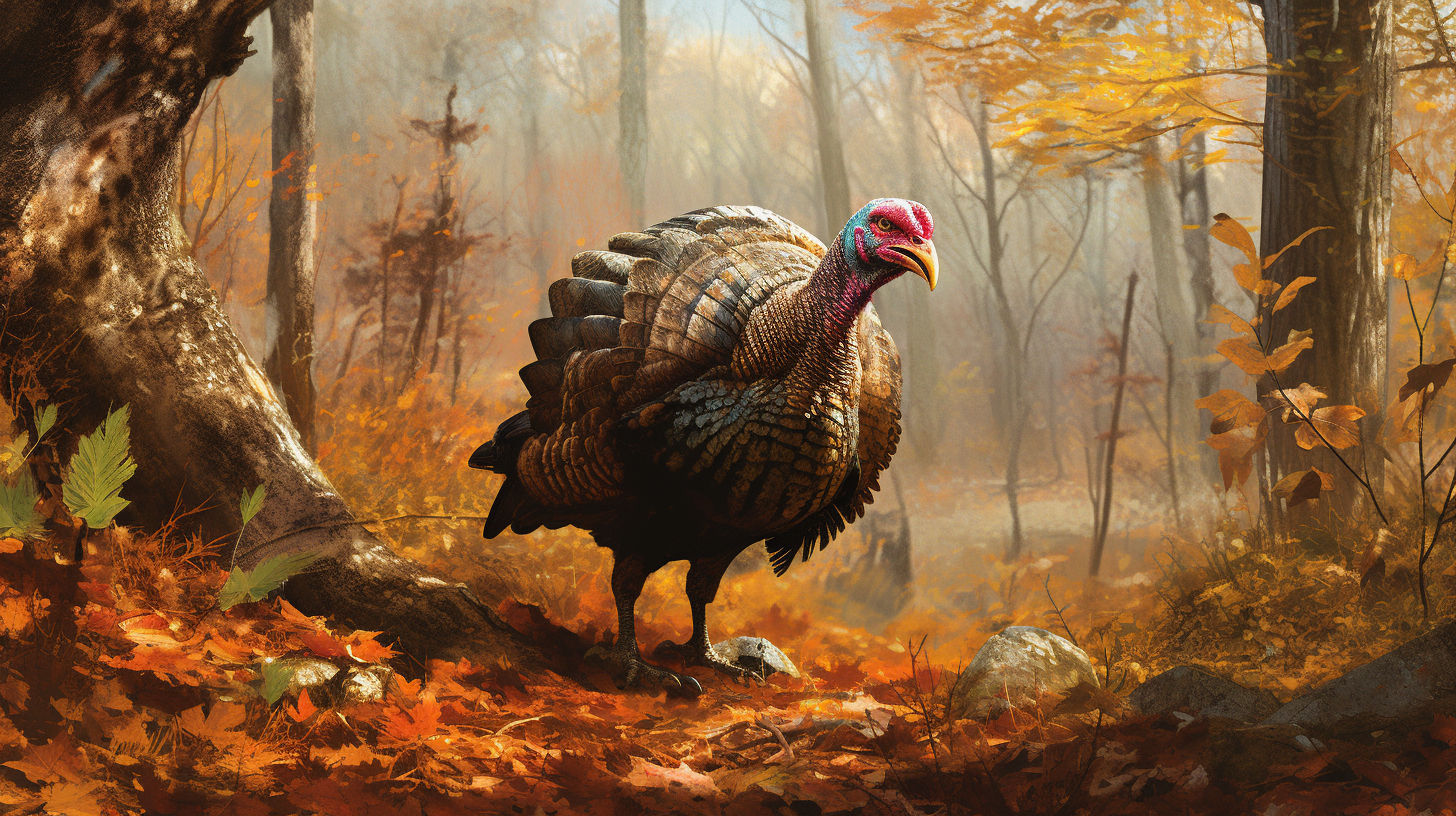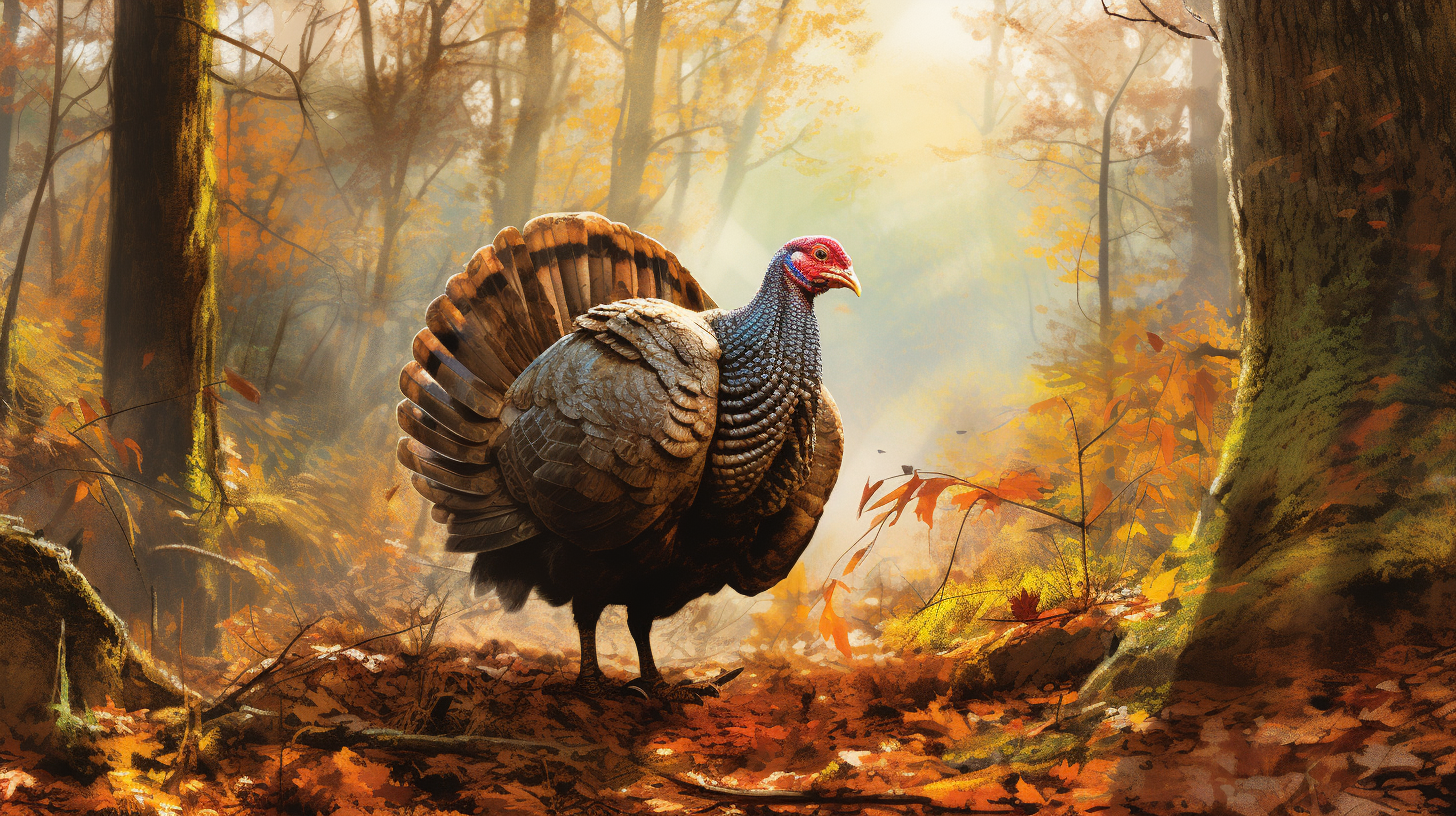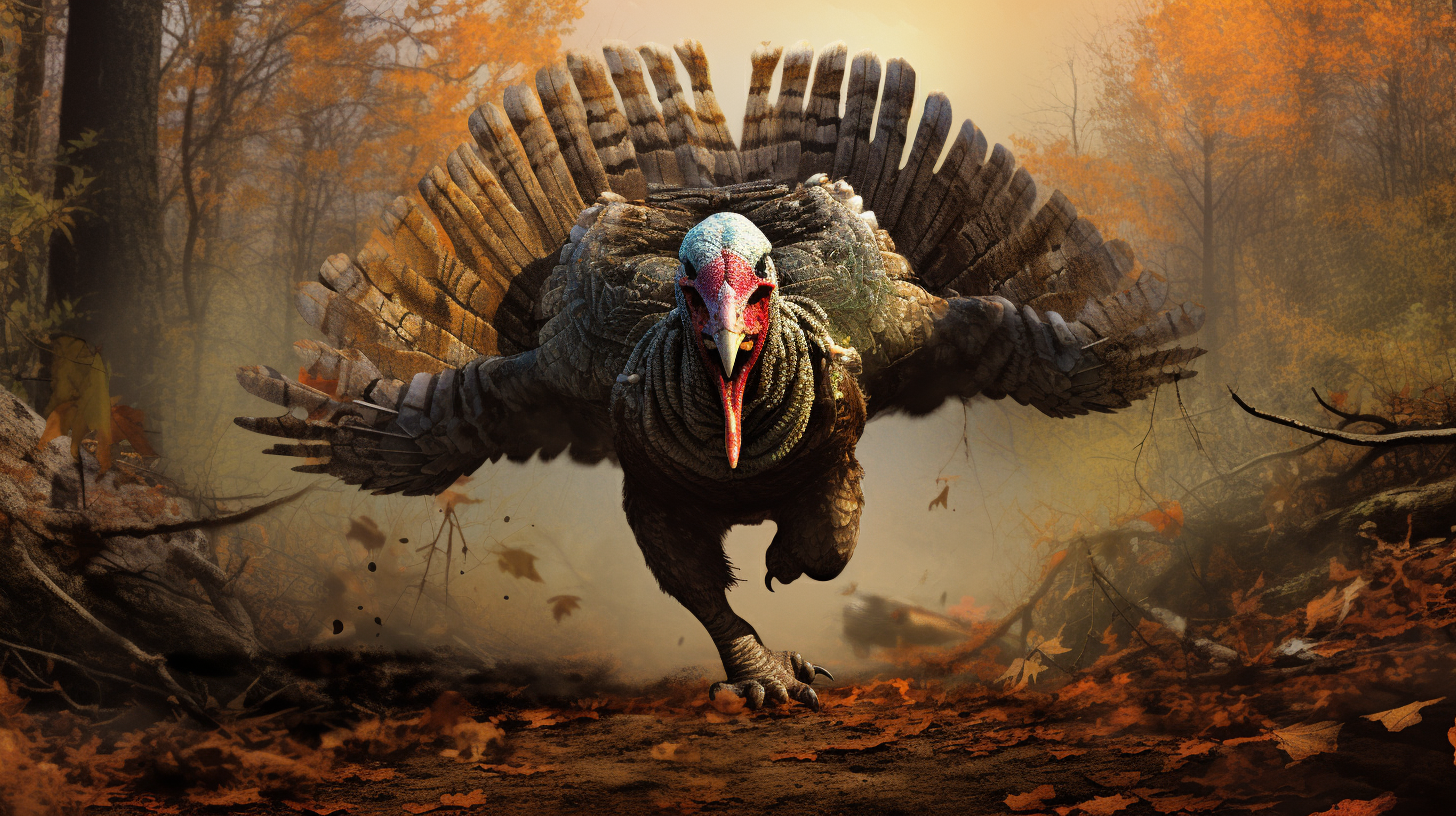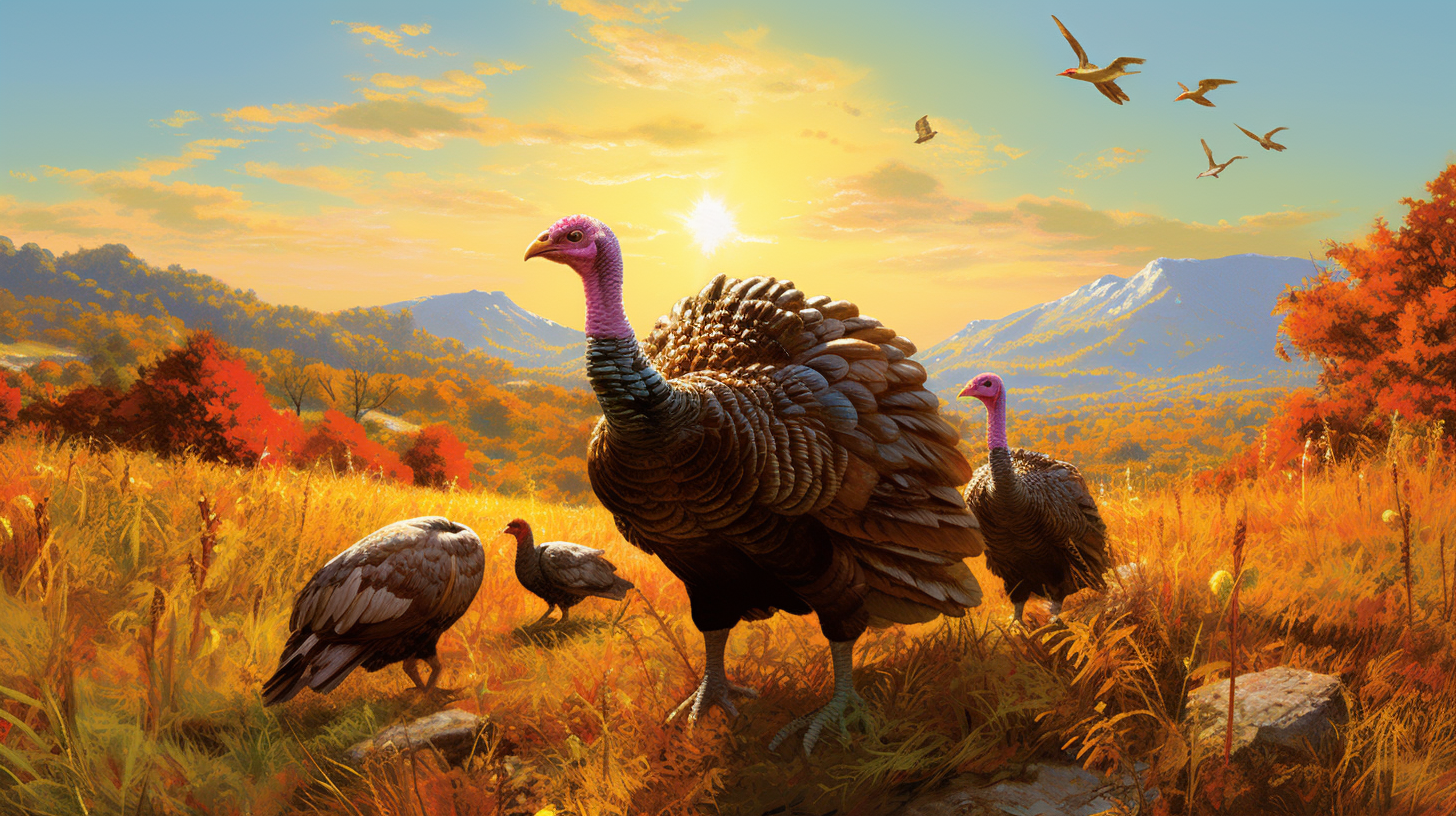Turkey Season: A Comprehensive Guide for Enthusiasts
0%

Turkey Season: A Comprehensive Guide for Enthusiasts
Turkey hunting is more than just a sport; for many, it's a rite of passage, a tradition passed down through generations. As the leaves change and the crisp air signals the arrival of the hunting season, enthusiasts prepare for the thrill of the hunt. This guide aims to provide an in-depth look into the world of turkey hunting, ensuring both novices and seasoned hunters are well-equipped for the season.
The Allure of Turkey Hunting
The wild turkey, with its majestic plumage and distinctive gobble, has long been a sought-after game bird in North America. The challenge of outsmarting this elusive bird, combined with the beauty of the great outdoors, makes turkey hunting an unforgettable experience.
Understanding the Turkey Seasons
Turkey seasons are divided into spring and fall, each offering a unique hunting experience.
Spring Turkey Season
The spring turkey season is characterized by the vibrant calls of male turkeys, or toms, as they seek mates.
-
Behavior: During this time, toms are more vocal, making them easier to locate. Their distinctive gobbles can be heard echoing through the woods, a sound that sends a thrill down every hunter's spine.
-
Hunting Techniques: Spring is the perfect time for "calling" techniques. Using a variety of calls, hunters can mimic the sounds of a hen to lure in a tom.
-
Season Dates & Bag Limits: While specific dates vary by region, the spring season typically starts in early April. The bag limit is often one bearded turkey per day, with a season total of two.
Fall Turkey Season
The fall turkey season presents a different set of challenges and rewards.
-
Behavior: Turkeys flock together in the fall, making them harder to isolate. However, this is an excellent opportunity for hunters to observe their social behaviors.
-
Hunting Techniques: "Flock busting" is a popular fall technique. This involves scattering a flock and then using calls to imitate lost young turkeys, drawing the adults back.
-
Season Dates & Bag Limits: The fall season generally begins in September. Bag limits can vary, but one turkey of either sex per day is standard in many regions.
Turkey Hunting Regulations
Before embarking on a hunt, it's crucial to familiarize yourself with local regulations. These can vary significantly between regions and are in place to ensure sustainable hunting practices.
-
Licenses & Permits: A hunting license is mandatory. Some areas also require special turkey hunting permits or tags.
-
Restricted Areas: Not all areas are open for hunting. Always check local guidelines to ensure you're hunting in a designated area.
-
Equipment Regulations: There are often regulations regarding the type of equipment you can use, including restrictions on certain firearms or archery equipment.
Turkey Hunting with Shotguns: A Detailed Guide
The shotgun is the weapon of choice for many turkey hunters. Its versatility, range, and effectiveness make it an ideal firearm for bringing down this elusive bird. Whether you're a seasoned hunter or just starting, understanding the nuances of shotgun hunting can significantly enhance your turkey hunting experience.
Choosing the Right Shotgun
The first step in successful turkey hunting with a shotgun is selecting the right firearm. While personal preference plays a role, there are some general guidelines to consider:
-
Gauge: The 12-gauge shotgun is the most popular choice for turkey hunting due to its power and range. However, the 20-gauge has gained popularity, especially among younger or smaller-framed hunters, as it offers less recoil.
-
Action: Both pump-action and semi-automatic shotguns are widely used in turkey hunting. Pump-action shotguns are often more affordable and reliable, while semi-automatics offer quicker follow-up shots.
-
Barrel Length: A barrel length of 24 to 26 inches is ideal. It provides a good balance between maneuverability and pattern performance.
Ammunition: The Power of the Shotgun Slug
The evolution of shotgun slugs has revolutionized turkey hunting. These are the factors to consider:
-
Shot Size: No. 4, 5, and 6 are the most common shot sizes for turkey hunting. The smaller the number, the larger the pellet. A good rule of thumb is to use No. 4 or 5 in the spring when shots are typically closer and No. 6 in the fall.
-
Shell Length: 3-inch magnum shells are standard, but 3.5-inch magnums are also available for 12-gauge shotguns, offering more pellets and potentially more knockdown power.
-
Material: Lead was the traditional choice, but non-toxic alternatives like tungsten are becoming more popular due to environmental concerns.
Choke Tubes: Tightening the Shot
A choke tube constricts the end of the barrel, influencing the spread of the shot. For turkey hunting, a tighter pattern is desired to ensure a clean kill.
-
Full or Extra Full Choke: These chokes provide the tightest patterns, making them ideal for turkey hunting. They ensure that a sufficient number of pellets hit the vital head and neck area of the turkey at varying distances.
Shotgun Sights
While many shotguns come with a bead sight, many turkey hunters opt for more advanced sighting systems:
-
Rifle-style Sights: These sights offer a rear and front sight, allowing for more precise aiming.
-
Red-dot Sights: These provide a clear point of aim, regardless of the shooter's head position.
Safety and Etiquette
Safety is paramount when hunting with shotguns:
-
Identify Your Target: Before pulling the trigger, always be sure of your target and what's beyond it.
-
Practice: Before the season starts, spend time at the range. Familiarize yourself with your shotgun's recoil, pattern, and effective range.
-
Respect Other Hunters: If you're hunting on public land or near other hunters, always be aware of their positions. Communication can prevent potential accidents.
Shotgun hunting for turkeys is both a science and an art. The right equipment, combined with knowledge and practice, can lead to a successful and ethical hunt. As always, respect for the bird and the environment should guide every hunter's actions.
Choosing the Right Equipment
Your choice of equipment can significantly impact your hunting experience. It's essential to select tools that align with your hunting style and the season.
-
Firearms: Shotguns are the most popular choice for turkey hunting. The evolution of shotgun slugs has provided hunters with more accurate and effective ammunition options.
-
Archery: For those who prefer a more traditional approach, bows – including compound and recurve – offer a challenging yet rewarding hunting experience.
-
Calls: A variety of calls, from box calls to diaphragm calls, can be used to mimic turkey sounds and lure birds closer.
Safety and Ethics in Turkey Hunting
Safety should always be a top priority. This includes firearm safety, understanding your surroundings, and being aware of other hunters. Ethical hunting practices ensure that the sport remains sustainable and respectful to the wildlife.
Final Thoughts
Turkey hunting is a blend of skill, patience, and deep respect for nature. As you prepare for the season, remember to immerse yourself in the experience fully. The thrill of the hunt, the beauty of the outdoors, and the camaraderie among hunters make turkey hunting a cherished tradition.
Whether you're a seasoned hunter or a novice eager to learn, the world of turkey hunting awaits. Dive deeper into topics like trap shooting or explore the nuances of shotgun shell gauge and shot size to enhance your hunting skills.
Here's to a successful turkey season and the memories you'll create along the way!


